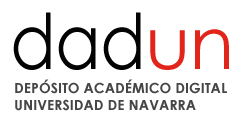The influence of obesity on the assessment of carotid intima-media thickness
Palabras clave :
Intima-media
Carotid
Obesity
Body mass index
Cardiovascular risk
Fecha de publicación :
2012
Editorial :
Wiley-Blackwell
Cita:
Gallego Perez-Larraya J, Irimia P, Martinez-Vila E, Barba J, Guembe MJ, Varo N, et al. The influence of obesity on the assessment of carotid intima-media thickness. J Clin Ultrasound 2012 Apr 17.
Aparece en las colecciones:
Ficheros en este ítem:
No hay ficheros asociados a este ítem.
Estadísticas e impacto
0 citas en

0 citas en

Los ítems de Dadun están protegidos por copyright, con todos los derechos reservados, a menos que se indique lo contrario.










